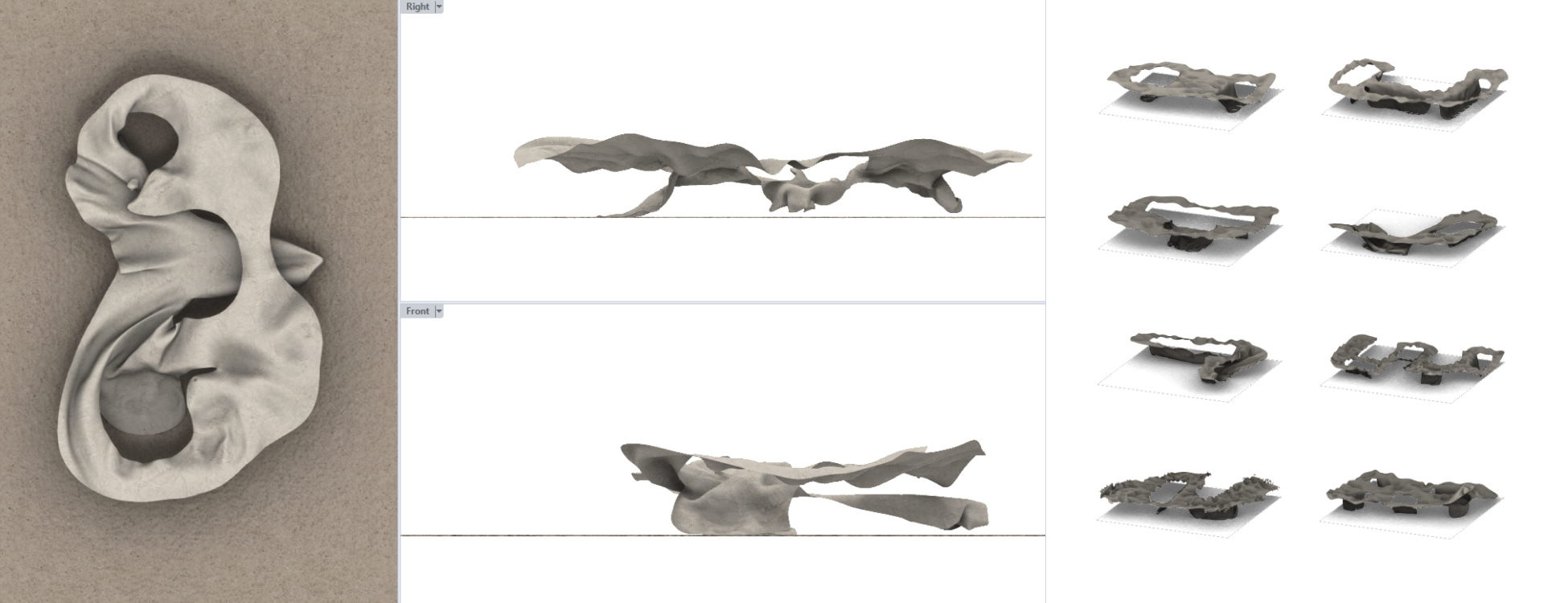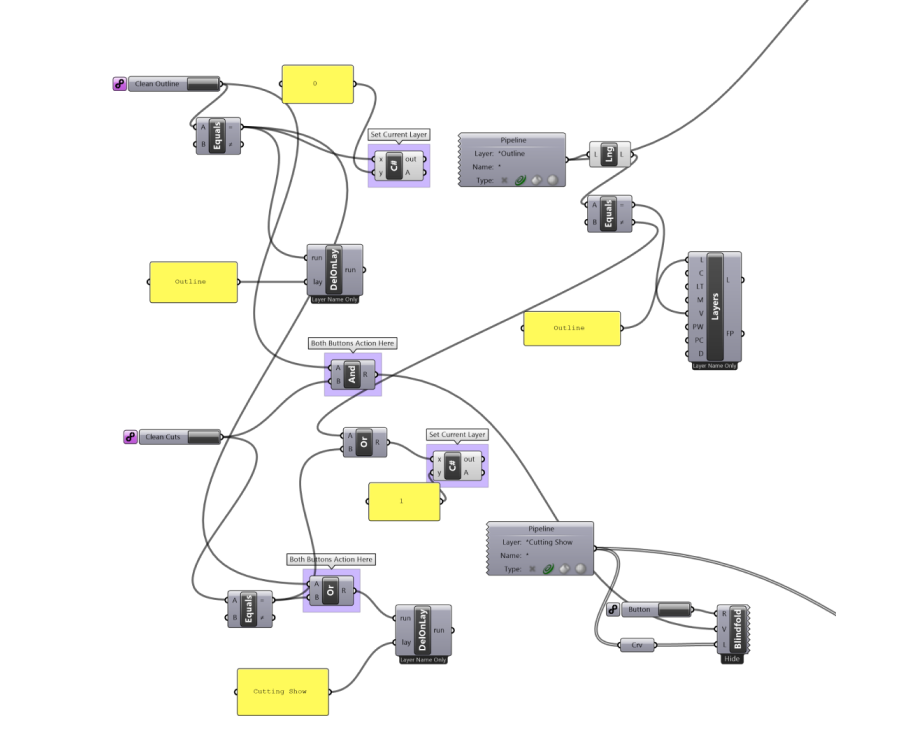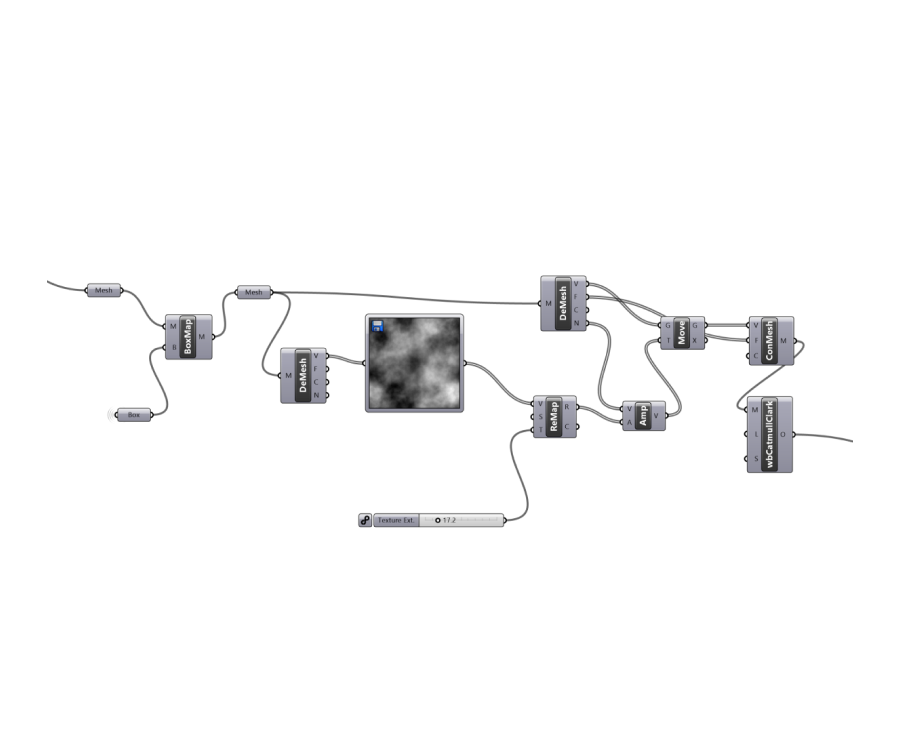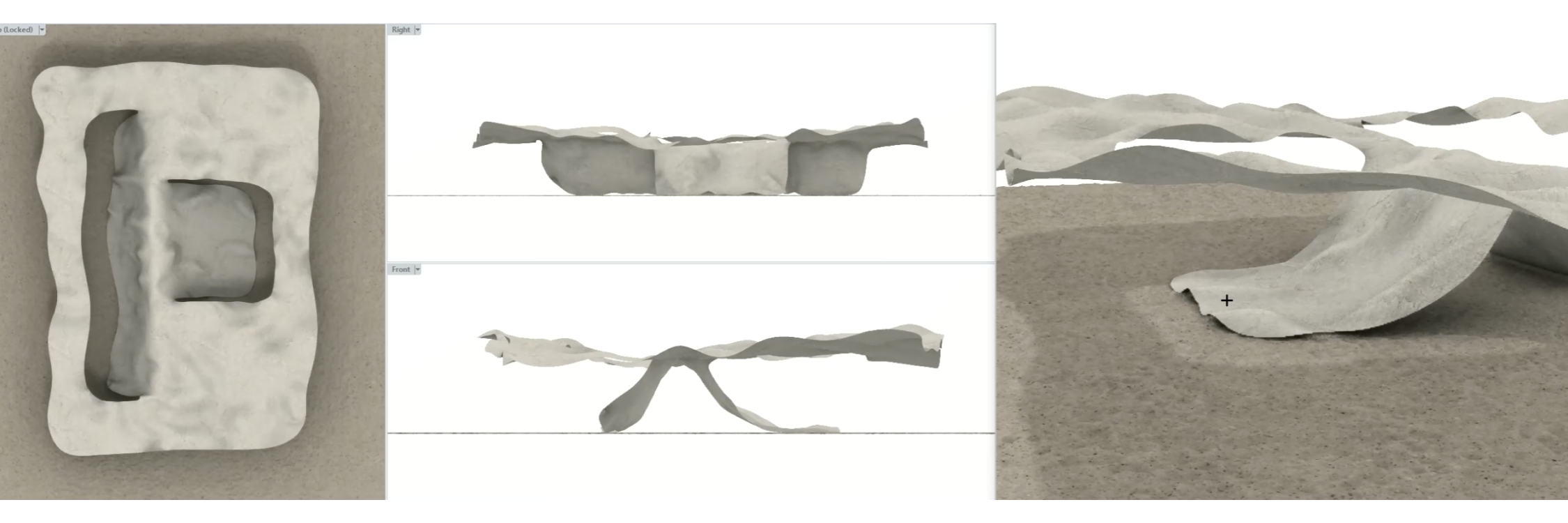Cutting Through Surface
A Surface Emerges at a Line
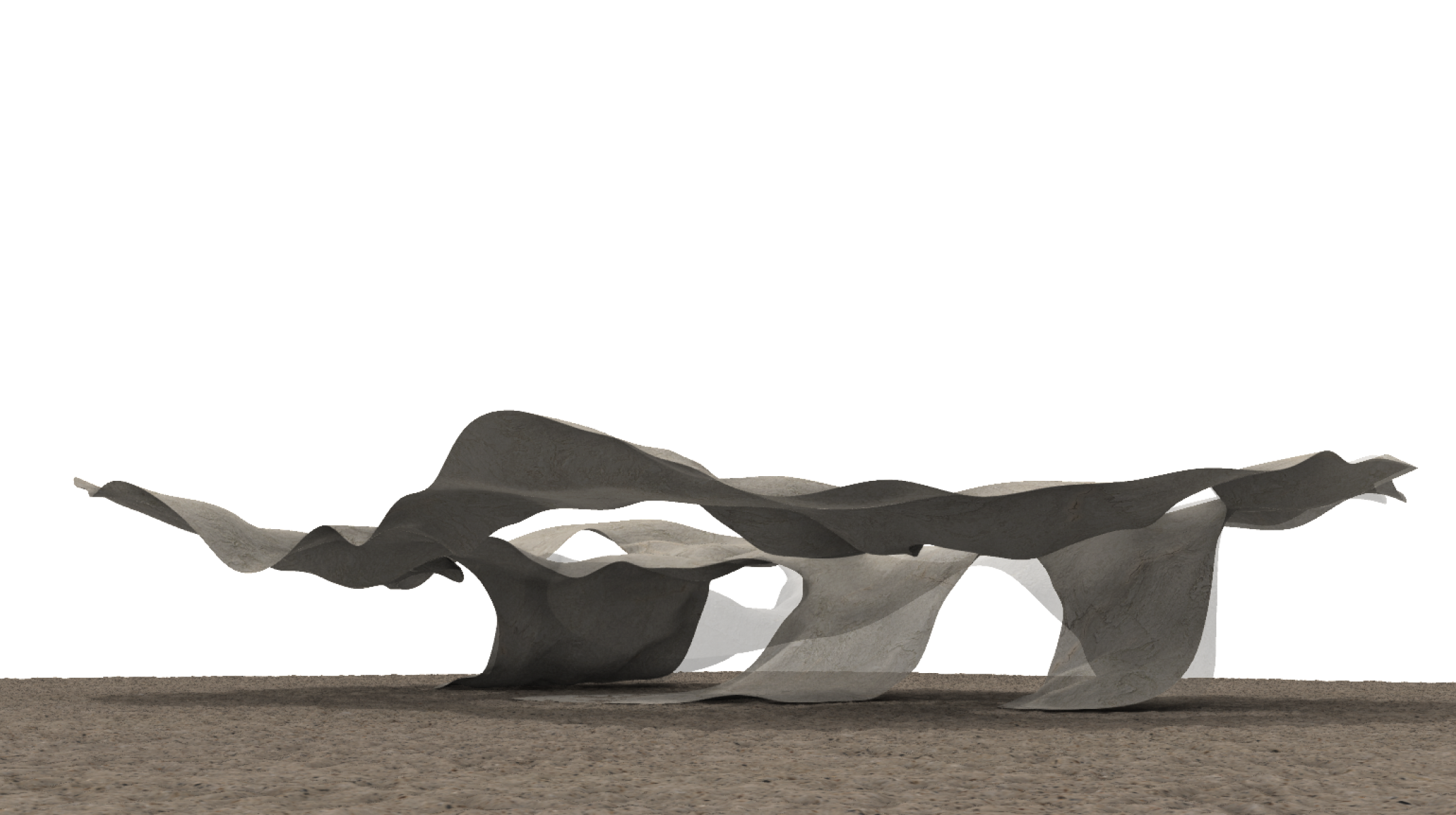
A surface emerges at a line, from 1D to 2D. While a surface can be distorted or textured, going from 2D to 3D, it is still a surface. On a scale of the cosmos, human beings are almost 2D creatures since most of our civilizations are happening on a surface, despite the ups and downs. So, how about slicing through the surface? We’re inspired by the architecture firm Ensamble Studio which created a tent pavilion by playing with cardboard: creating a quasi-3D space with a piece of surface. That is why we’re interested in the definition of a 2.5D surface.
Technically, we coded in C# and GH to set up a workflow that allows us to cut a surface and let it drop down to form a space. This process is iterative so that all the results can be digitally ‘pin-ed up’, just like how we make physical models. We also use Kangaroo to simulate the physics.
